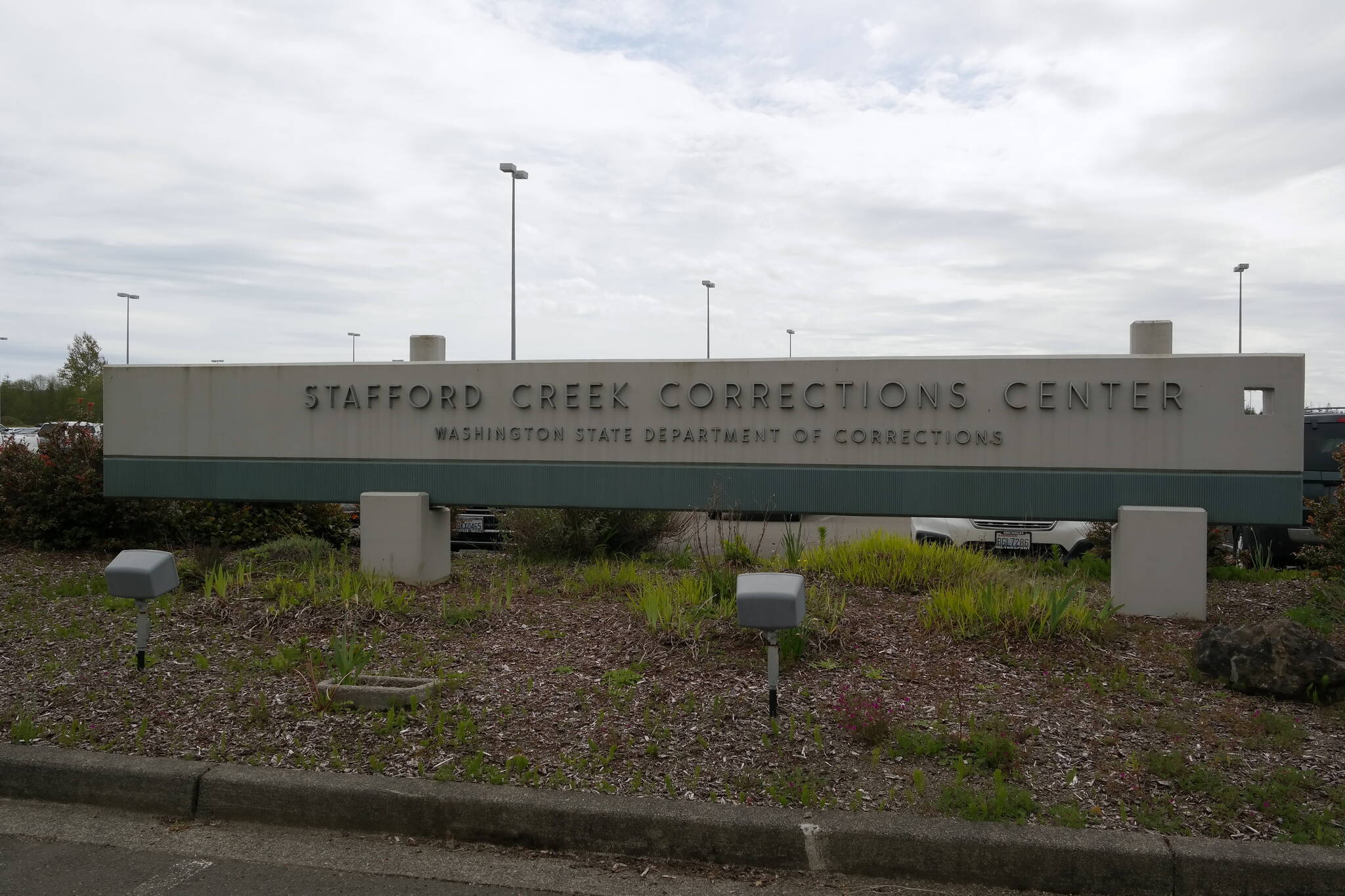A tuberculosis outbreak at Stafford Creek Corrections Center has spurred fears among incarcerated people and their families over whether correctional officials are properly responding to the serious and sometimes fatal infectious disease.
The cluster of 17 cases of active TB disease at the prison have helped drive what state health officials described last week as Washington’s largest TB outbreak in two decades. The state has recorded 70 cases so far this year.
Some of those incarcerated at Stafford Creek have raised alarms at the Aberdeen prison — recently hammered by state investigators for flouting pandemic safety measures — questioning whether the state Department of Corrections is capable of handling the outbreak.
“I have a grave concern, not just for myself but for everybody,” said Theodore Rhone, 64, who lives in a minimum security unit at the prison and described his risk factors as including diabetes, high blood pressure and getting previously stabbed in the heart.
Speaking by phone Monday, May 2, Rhone said his worries are based in part on what he has seen during the COVID-19 pandemic, which infected many at the prison, killing five incarcerated people and three employees — the highest toll at any of Washington’s dozen prisons. “They haven’t handled anything,” he said.
In December 2021, state regulators fined the DOC $60,000 for failing to enforce pandemic protective measures at Stafford Creek. An investigation by the state Department of Labor and Industries cited the agency for a “willful serious violation,” finding failures to enforce distancing measures and ensure that staff members were wearing masks.
Another man among the 1,800 incarcerated at Stafford Creek said he has tested positive for a latent TB infection.
“I got it here. I am furious about it,” said the man, who requested anonymity out of concern over possible retaliation. “There could be potentially people leaving this facility and entering their communities and possibly spreading a virus that is laying dormant.”
Persons with latent TB have no symptoms and cannot spread it to others. Without treatment, about 5 percent to 10 percent of people with such infections will develop active TB disease, which is infectious, within two years, according to the Centers for Disease Control and Prevention. An estimated 200,000 people in Washington have inactive TB.
The 17 cases disclosed at Stafford Creek are active TB disease cases, according to the state Board of Health. Those people are in stable condition and are receiving medication “per clinical guidelines,” DOC spokesperson Tobby Hatley said in an email.
The DOC has been testing staff and incarcerated people at the prison, Dr. MaryAnn Curl, the agency’s chief medical officer said in a statement last week, providing no further details.
DOC declined to make medical staff or media spokespeople available for phone interviews regarding the outbreak. The agency has not stated how many people associated with the prison have tested positive for latent TB.
The number of active TB cases has grown over the past month and a half. As of March 14, the prison had reported 11 active cases, according to a memo sent to staff and incarcerated people and their families by Ron Haynes, the superintendent of Stafford Creek.
Tuberculosis is caused by a bacterium that usually attacks the lungs, causing symptoms including coughing, fever, night sweats, chest pain and weight loss. The disease has become increasingly rare in the U.S., but killed 1.5 million globally in 2020, according to the World Health Organization. In Washington, seven TB patients died between 2017 and 2021, according to a state health department spokesperson.
The general public is not at risk for TB, said Monica Pecha, senior epidemiologist and tuberculosis program manager for the state Department of Health. Infections are typically caused by repeated exposure to someone with active symptoms.
“Going to the grocery store for instance would not be considered an exposure or a risk factor,” Pecha said in an interview.
But people who live or work in congregate settings, such as homeless shelters, long-term care facilities, hospitals and prisons, are at greater danger due to shared air spaces, according to the CDC.


